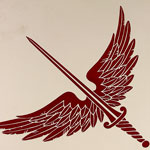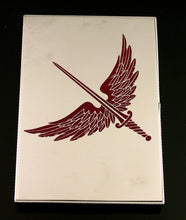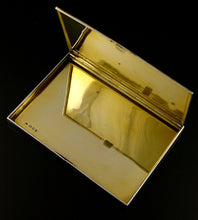Millionaires' Squadron Presentation Cigarette Case by Cartier, 1939-40
Adding product to your cart
12cm (4.75in) x 8.4cm (3.25in)
The front cover enamelled with the badge of 601 (County of London) Squadron, as devised by Lord Edward Grosvenor and formerly approved by Edward VIII in 1936. The reverse, inscribed to 601 Squadron’s commander during the Battle of France Loel Guinness from ‘B’ Flight Xmas 1939. Gilt interior. Hallmarked London 1937.
Group Captain Loel Guinness, O.B.E. (1906-1988) took command of 601 in early 1940 and following the Nazi blitzkrieg against the Low Countries on 10 May 1940, led it during a period of intense aerial combat in which the squadron claimed 20 enemy aircraft destroyed over the approaches to the Dunkirk evacuation beaches, with Guinness himself engaging and destroying two Heinkel 111 bombers on 18 May. On the 31st Guinness further provided nine Hurricanes to fly close escort to Winston Churchill's De Havilland Flamingo aircraft on an urgent round trip to Paris days before the Fall of France.
Read more
On 1 June the squadron was ordered to Middle Wallop but on the 6th Guinness was posted to Catterick as a 13 Group sector controller - a consequence, some say, of using his considerable influence as a serving Member of Parliament and financier to obtain 601’s Hurricanes sooner than senior officers and Air Ministry officials might otherwise have planned. Sergeant Pilot G.H. Harden of 601 Squadron was sorry to see him go ‘for he was the ideal man for the job and we shall be lucky if we have another like him, no matter what the situation he was always the C.O. To be flying a fighter at his age, 44 I believe, was a good example of his pluck, he was popular from the first to the last man in the squadron.’
A former subaltern in the Irish Guards, Guiness learned to fly in the late 1920s and was closely associated with 601’s colourful early history. The squadron was officially formed at Northolt as a light-bomber unit of the Royal Auxiliary Air Force in 1925 in response to Lord ‘Boom’ Trenchard’s plans for a non regular air force, though its members may have considered White’s Club in St. James’s its true home. Its first commanding officer, Lord Edward Grosvenor, was successful in not only proving 601 the best squadron in the auxiliary service during his tenure, but also in attracting officers ‘of sufficient presence not to be overawed by him and of sufficient means not to be excluded from his favourite pastimes, eating, drinking and Whites.’
References:
Hunt, L. (1992) Twenty-One squadrons, The History of the Royal Auxiliary Air Force, 1925-1957, Garnstone Press, London
Moulson, T. (1964) The Flying Sword, The story of 601 (County of London) Squadron Royal Auxiliary Air Force, Macdonald, London
www. 601diary.wordpress.com (accessed 24.1.14)








